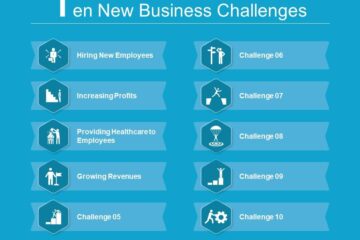
Sustainability efforts present an opportunity to tap new sources of capital and innovation.
GETTY
Sustainable investing has moved to center stage in early 2020. In his latest letter to CEOs Blackrock CEO Larry Fink writes that sustainability, which involves integrating environmental and social concerns into business decisions, would be at the center of his firm’s investment approach. He also foresees an imminent and “fundamental reshaping of finance” that would better recognize the jeopardy to investment posed by climate risk and lead to “a significant reallocation of capital.”
CFOs and other business leaders might see the coming changes as a threat. Blackrock,with nearly $7 trillion in assets under management, has promised to exit investments that pose a high sustainability risk, and only time will tell what investments that will ultimately include. Fink also warned that failing to manage climate-related risks and other harmful actions “will catch up with a company and destroy shareholder value.” He added that companies that are insufficiently responsive to stakeholder and sustainability concerns will face increased skepticism and higher capital costs.
The future holds unparalleled opportunities, however, for companies that heal rather than damage society.
First, as Fink points out such companies will have an easier time attracting patient investors with a greater willingness to wait for return of capital. That is crucial given Fink’s explanation that Blackrock’s fiduciary responsibility to its clients is to create long-term value. Impatient capital renders that task difficult, if not impossible.
Second, sustainability represents a source of innovation. We simply cannot get from where we are to an environmentally, socially and economically sustainable future without an historically unprecedented amount of innovation. Paul Hawken is an entrepreneur and the author of The Ecology of Commerce, a groundbreaking 1993 treatise that took business to task for environmental damage. In the 2010 revised edition, Hawken writes that if he were rewriting the book today he “would emphasize that sustainability is one of the most certain paths to innovation for companies seeking a competitive edge.”
Third, integrating sustainability more deeply into a company’s overall strategy is a great way to grow both top and bottom lines. The late Ray Anderson, founder and CEO of the carpet tile company Interface and considered by many to be the greenest CEO in America, described sustainability in his TED talk as “a better way to bigger profits.” He also writes that “Done right, sustainability doesn’t cost. It pays.”
In that TED talk Anderson decried the “false choice” between the economy and the environment, claiming that worrying about the climate didn’t mean losing sight of profits. He observed:
Our products are the best they’ve ever been, inspired by design for sustainability, an unexpected wellspring of innovation. Our people are galvanized around this shared higher purpose. You cannot beat it for attracting the best people and bringing them together. And the goodwill of the marketplace is astonishing. No amount of advertising, no clever marketing campaign, at any price, could have produced or created this much goodwill.
Fourth, as Anderson discovered, going a credibly deeper shade of green is a good move for companies that want to be employers of choice. Fink noted in his letter that “Young people have been at the forefront of calling on institutions… to address the new challenges associated with climate change.” They care about the issue and want to work for companies that share that concern.
A recent global survey of more than 3,700 students from 29 top business schools found that the respondents were “ increasingly sorting companies into top and bottom environmental performers with associated consequences for recruiting and compensation.” The survey found that 78% of students were more inclined to apply for a job with a company with excellent environmental performance, 80% were more likely to accept a job with such a company, and 44% would accept a lower salary to work for a sustainability standout. The survey was conducted by Yale University in collaboration with the Global Network for Advanced Management and the World Business Council for Sustainable Development.
Finally, the promised reshaping of finance and capitalism represents an historic opportunity for business leaders to do their part to stave off environmental catastrophe and related economic collapse. That is a legacy to be proud of.
Larry Fink in his letter took the position that government must lead the transition to a more sustainable future but that companies and investors also have a “meaningful role to play.” Ray Anderson and others would see that as understating the role of business. In his TED talk, Anderson echoed Hawken’s view that while business was the “chief culprit” in causing environmental decline it was also “the only institution that is large enough, and pervasive enough, and powerful enough, to really lead humankind out of this mess.”
Hopefully current business leaders will earn the gratitude rather than the scorn of future generations by doing just that while time allows.
[“source=forbes”]



